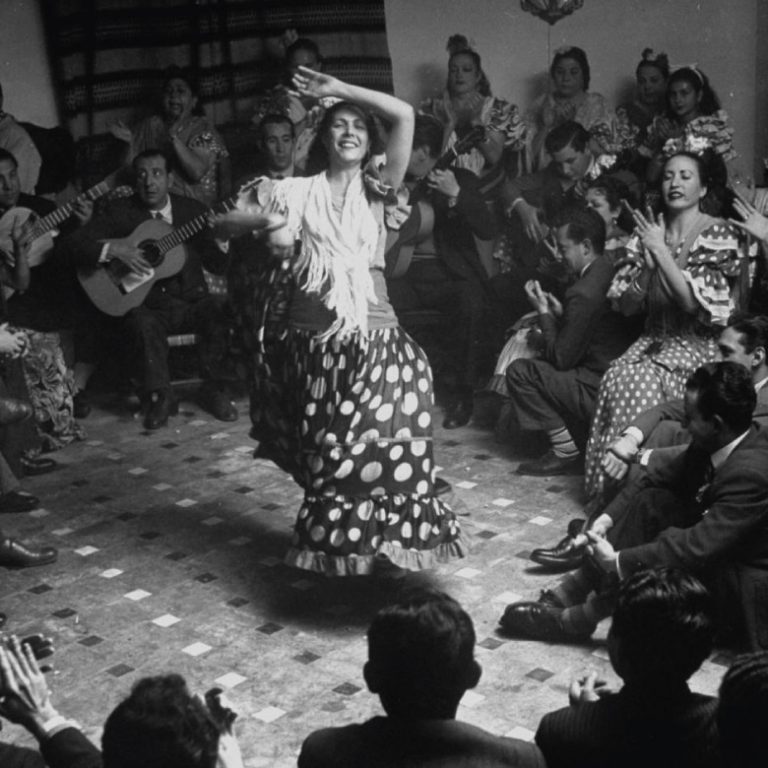Learn Flamenco Guitar Techniques: A step by step guide
Introduction:
Why is good technique important for playing flamenco guitar?
Precise and rapid technique is a fundamental requirement for playing flamenco guitar, the guitarist must use technical skill to enthrall the audience.
In solos you must evoke the power of a dancer`s movements and the beauty of a singer`s voice, as the guitar itself dances and sings!
Rasgueado (The Iconic Flamenco Strum)
A rapid strumming technique using finger flicking.
In flamenco guitar, Rasgueados (or Rasgueos) are strumming techniques that produce the characteristic rhythmic intensity of the genre. They involve striking the strings with the fingers in various patterns. Here are the main types of rasgueados:
-
Basic Rasgueados (by finger count)
Single-Finger Rasgueado (1 stroke)
Done with one finger (usually index, middle, or ring).
Two-Finger Rasgueado (2 strokes)
Common combinations: index + middle (índice y medio).
Three-Finger Rasgueado (3 strokes)
Often index + middle + ring (índice, medio, anular).
Four-Finger Rasgueado (4 strokes)
Uses index + middle + ring + pinky (índice, medio, anular, meñique).
Five-Finger Rasgueado (5 strokes, rare)
Includes thumb + all fingers (pulgar + todos los dedos).
-
Common Rasgueado Patterns
Abanico (Fan Rasgueado)
A fan-like motion, often using thumb + fingers (e.g., thumb down + fingers outward).
Continuous Rasgueado (Rasgueado Continuo)
A rolling motion, often alternating fingers (e.g., ami, ami, ami for ring-middle-index).
Triplet Rasgueado (3-stroke roll)
Common in bulerías, often ami (ring-middle-index) or pam (thumb-index-middle).
“Picado-Rasgueado” Combination
Mixes picking and strumming for fast passages.
“Alzapúa Rasgueado”
Combines thumb technique (alzapúa) with strumming.
-
Flamenco Palos-Specific Rasgueados
Soleá / Bulerías Rasgueado
Heavy, syncopated patterns with accents on specific beats.
Alegrías / Tangos Rasgueado
Lighter, more flowing strumming.
Sevillanas Rasgueado
Structured, dance-accompaniment patterns.
Fandangos Rasgueado
More lyrical, less percussive.
Key Techniques in Rasgueados
Rest Stroke (Apoyando) Rasgueado
Fingers come to rest on adjacent strings.
Free Stroke (Tirando) Rasgueado
Fingers release freely after strumming.
Percussive Rasgueado (Golpe + Rasgueado)
Includes tapping the guitar body (golpe) mid-strum.
Each rasgueado has its own flavor and is used depending on the palo (flamenco style) and the guitarist’s preference. Mastering these requires control, speed, and rhythmic precision.
Continuous Rasgueado (Rasgueado Continuo)
Continuous rasgueado is a fast, rolling strumming technique used in flamenco to create intense, driving rhythms. Unlike single-stroke rasgueados, it involves repeating a finger pattern without stopping, making it essential for bulerías, tangos, rumba, and energetic falsetas
What is Continuous Rasgueado?
A repeating strumming pattern where fingers roll in a cycle (usually 4 or 5 strokes).
Creates a machine-gun-like effect, maintaining rhythmic momentum.
Types of Continuous Rasgueado
- 4-Finger Roll (A-M-I-A) – Most Common
Pattern: Ring (A) → Middle (M) → Index (I) → Ring (A) → (repeat)
Sound: Fluid, rapid strumming.
- 5-Finger Roll (A-M-I-A-M) – More Intensity
Pattern: Ring (A) → Middle (M) → Index (I) → Ring (A) → Middle (M) → (repeat)
Sound: Faster, more aggressive.
- 3-Finger Roll (M-I-A) – Lighter, Triplet Feel
Pattern: Middle (M) → Index (I) → Ring (A) → (repeat)
Picado (Flamenco Scale Runs)
In flamenco guitar, Picado is a virtuosic technique used for playing fast, articulate single-note lines—often in scales, melodies, and falsetas (flamenco solos). It’s similar to classical guitar’s scale technique but with a sharper, more aggressive attack, emphasizing rhythmic precision and clarity.
Characteristics of Picado:
Alternating Fingers,
Primarily uses index (i) and middle (m) fingers in strict alternation (*i-m-i-m*).
Some players incorporate the ring finger (*a*) for added speed.
Rest Stroke (Apoyando)
The finger plucks the string and rests on the next string (unlike tirando in classical guitar).
Produces a strong, punchy sound, essential for flamenco’s percussive phrasing.
Hand Position
The right hand is angled slightly inward (unlike classical guitar’s perpendicular approach).
The wrist is relaxed but firm, allowing rapid finger movement.
Economy of Motion
Minimal finger movement—only the first joint flexes (no excessive lifting).
The motion comes from the large knuckle (metacarpophalangeal joint).
Rhythmic Precision
Picado is often used in fast 16th-note passages (e.g., in soleá, bulerías, granaína).
Must align tightly with compás (flamenco rhythm).
Golpe (Percussive Knuckle Taps)
In flamenco guitar, golpe (literally “hit” or “strike”) is a percussive technique where the guitarist taps the guitar’s body or strings to add rhythmic accents. It’s a crucial element in flamenco’s compás (rhythmic structure), adding punch and syncopation. The golpe is often combined with rasgueados, picado, and alzapúa to enhance the music’s drive and intensity.
Alzapúa
Alzapúa is one of the most powerful and distinctive techniques in flamenco guitar, where the thumb (pulgar) is used to play rapid, percussive bass lines, melodies, and strumming patterns in a single fluid motion. It combines bass notes, chords, and golpe accents, creating a driving rhythmic force—essential in bulerías, soleá, and rumba flamenca.
Common Flamenco Palos Using Alzapúa
| Palo | Alzapúa Style | Example Use |
| Bulerías | Fast, syncopated | Thumb runs + golpe accents |
| Soleá | Heavy, deep bass | Slow, powerful thumb strikes |
| Rumba | Groovy, strummed | Down-up strumming (e.g., Paco de Lucía) |
| Tangos | Rhythmic drive | Bass-chord alternation |
The technique involves three key movements:
Downstroke (Bass Note or Chord) – The thumb strikes downward, often playing a bass note or full chord.
Upstroke (Strum or Single Note) – The thumb flicks upward, either brushing the strings or plucking a single note.
Golpe (Percussive Tap) – Sometimes, a thumb tap (golpe) is added for extra punch.
Tremolo
Tremolo is a mesmerizing technique that creates the illusion of a sustained note by rapidly repeating a single pitch. While tremolo is also used in classical guitar, flamenco tremolo has its own distinct style—more rhythmic, percussive, and often integrated with compás (flamenco rhythm).
Pattern : P i a m i
Ligado (Hammer-Ons & Pull-Offs)
Left-hand slurs for fast, smooth phrasing.
Flamenco Style: Aggressive, percussive hammer-ons (golpe sometimes added).
Apagado (Palm Muting)
Damping strings with the right palm for percussive, short notes.
Arpegios
Arpeggios are broken chords where notes are played in sequence (not simultaneously). In flamenco, they add fluidity, speed, and harmonic richness to falsetas (solos) and accompaniments. Unlike classical arpeggios, flamenco arpeggios are sharper, more rhythmic, and often integrated with golpe (percussive taps).
Types of Flamenco Arpeggios
-
Right-Hand Patterns
Flamenco uses 4 main arpeggio patterns, each with a distinct feel:
- P-A-M-I (Thumb + Ring-Middle-Index)
Example:
P (thumb) on bass string (e.g., 6th or 5th string).
A-M-I (ring-middle-index) on higher strings (e.g., 1st-2nd-3rd).
- P-I-M-A (Thumb + Index-Middle-Ring)
Smoother, faster transitions.
Used in: Modern falsetas (Paco de Lucía, Vicente Amigo).
- P-I-M-I (Thumb + Alternating Index-Middle)
Creates a lighter, rolling effect.
- P-M-I-M (Thumb + Middle-Index-Middle)
Adds rhythmic bounce.
Advanced Arpeggio Techniques
- Arpeggio + Ligado (Slurs)
Combine P-A-M-I with hammer-ons/pull-offs for speed.
Example: Play P-A-M-I, then hammer-on the 3rd string.
- Arpeggio + Picado Hybrid
Alternate between arpeggios and picado runs (common in modern flamenco).



